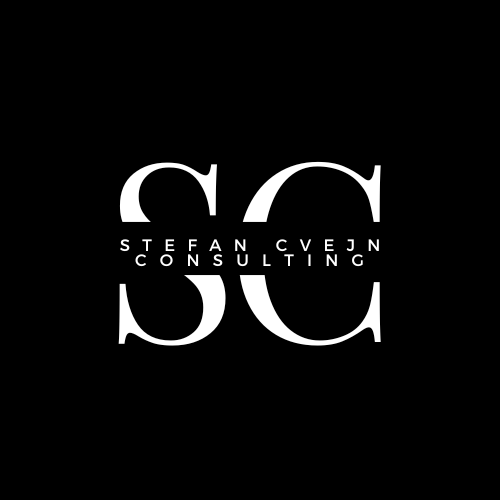So, what’s the big deal about it? Well, software development cost estimation is like your GPS when you’re embarking on the journey of creating a new software product. It’s all about predicting the most realistic amount of effort (expressed in terms of cost) required to develop software.
Why is it so crucial, you ask? Imagine setting off on a road trip without knowing how much gas you’ll need. You could end up stranded in the middle of nowhere! In the same way, without a solid cost estimate, your software development project could run out of budget halfway through, leaving you in a tricky situation.
Bottom line: Cost estimation is your roadmap to a successful, on-budget software project. It’s not just about keeping your wallet happy, but also about making informed decisions, planning efficiently, and setting realistic expectations. So, let’s buckle up and explore this journey together!
Understanding the Basics of Cost Estimation
When we talk about cost estimation in software project development, we’re referring to the process of predicting the resources (time, manpower, and money) that a software project will require. It’s like trying to figure out how much gas, time, and snacks you’ll need for a road trip.
Now, there are a few ways you can go about this. Let’s break it down:
Rough Estimates
This is your quick, back-of-the-napkin calculation. It’s like looking at a map and guessing, “Hmm, this trip might take around 5 hours.” It’s not super precise, but it gives you a ballpark figure to start with.
Budget Estimates
Now, this is a bit more detailed. You’ve done some research, checked the traffic, and considered your speed. You’re pretty sure the trip will take about 6 hours. It’s more accurate than a rough estimate, but there’s still some wiggle room.
Statement of Work (SOW)
This is the most detailed estimate. You’ve planned your route, scheduled your breaks, and even factored in time for unexpected detours. You’re confident that you’ll reach your destination in 6 hours and 30 minutes.
Here’s a quick comparison:
| Type of Estimate | Level of Detail | Accuracy |
|---|---|---|
| Rough Estimate | Low | Low |
| Budget Estimate | Medium | Medium |
| Statement of Work (SOW) | High | High |
Remember, the type of estimate you choose depends on your project’s needs. A rough estimate might be enough for a small, straightforward project, while a complex project might require a detailed SOW. It’s all about picking the right tool for the job!
Factors Influencing Software Development Cost
Okay, let’s talk about what drives the cost of software development. It’s not just about how many hours you put in; several factors can make your project more or less expensive. Think of these as the variables that determine how much gas your road trip will need. Let’s break them down:
Feature and Design Complexity
This is like the difference between a leisurely drive in the countryside and a high-speed race on a twisty track. The more complex your software’s features and design, the more time, effort, and therefore cost it will take to build.
Team Composition
Think of this as who’s in the car with you. A team with more experienced (and higher-paid) members will cost more, but they might also get the job done faster and better.
Technology Stack
This is like the make and model of your car. Some technologies are more expensive to work with than others, either because they require special skills or because they take more time to implement.
Third-Party Integrations
These are like the toll roads on your trip. Integrating with third-party services can add to the cost, especially if those services charge fees. But they can also save you time and money in other areas, like if a toll road helps you avoid a traffic jam.
Project Size
This one’s pretty straightforward – a longer trip requires more gas. Larger projects with more features will naturally cost more than smaller ones.
Development Timelines
This is the speed at which you’re driving. Faster development times often require more resources, like having to bring on extra team members to meet a tight deadline.
Here’s a handy table to sum it up:
| Factor | Description | Impact on Cost |
|---|---|---|
| Feature and Design Complexity | More complex features and designs require more resources. | Increases cost |
| Team Composition | More experienced teams may cost more but deliver better results. | Can increase or decrease cost |
| Technology Stack | Some technologies are more expensive to work with. | Can increase cost |
| Third-Party Integrations | Integrations can add to the cost but also save time. | Can increase or decrease cost |
| Project Size | Larger projects naturally cost more. | Increases cost |
| Development Timelines | Faster development requires more resources. | Increases cost |
Understanding these factors can help you better estimate your software development costs and plan your budget effectively. It’s all about knowing what’s ahead on the road!
Steps to Calculate Software Development Cost
1. Requirement Analysis
This is where you figure out where you’re going and what you’ll need to get there. In this step, you’ll define what your software needs to do, who it’s for, and how it should work. It’s like deciding on your destination and the route you’ll take.
2. Setting Up a Team
Now, you need to decide who’s coming on the trip with you. You’ll need to assemble a team of developers, designers, project managers, and maybe others, depending on your project. Remember, the size and experience level of your team can significantly impact the cost.
3. Feature and Design Analysis
This is where you get into the nitty-gritty of what your software will look like and what it will do. You’ll need to plan out all the features and how they’ll work, as well as the overall design and user experience. It’s like planning out all the stops you’ll make on your trip.
4. Cost Estimation
Finally, you’re ready to calculate the cost. You’ll need to estimate how much time and effort each feature will take to develop, and then multiply that by the cost of your team’s time. Don’t forget to factor in any additional costs, like third-party services or software licenses.
Here’s a quick recap:
| Step | Description |
|---|---|
| Requirement Analysis | Define what your software needs to do and how it should work. |
| Setting Up a Team | Assemble your team of developers, designers, and project managers. |
| Feature and Design Analysis | Plan out all the features and the overall design and user experience. |
| Cost Estimation | Estimate the time and effort for each feature, and calculate the total cost. |
This is a simplified version of the process, and every project is different. But these steps should give you a good starting point for estimating your software development cost. Happy planning!
Prerequisites for Cost Estimation
Before we can start estimating costs, we need to gather some crucial information. It’s like making sure you’ve got your map, snacks, and a killer playlist before you hit the road. Here’s what you need:
Project Goals
What are you hoping to achieve with your software? This could be anything from “increase productivity” to “revolutionize the online dating scene.”
Target Audience
Who will be using your software? Understanding your users can help you make decisions about features, design, and more.
Unique Selling Point
What makes your software different from everything else out there? This could affect how complex your software needs to be and what technologies you’ll use.
Direct Competitors
Who are you up against? Knowing what your competitors are offering can help you figure out what you need to do to stand out.
Type of Software
Are you building a mobile app? A web app? A piece of enterprise software? Different types of software can have vastly different costs.
Third-Party Integrations
Will your software need to connect with any other services? This could add to the complexity (and cost) of your project.
Important Features
What features will your software need? Each feature will add to the cost, so it’s important to know what you’re getting into.
Requirements for User Interface Design
How should your software look and feel? Good design can be time-consuming, so it’s important to factor this in.
Responsiveness
Will your software need to work on a variety of screen sizes and devices? This can add to the complexity of your project.
User Journeys
How will users interact with your software? Understanding this can help you plan out your features and design.
Monetization Strategies
How will your software make money? Whether it’s through ads, in-app purchases, or a subscription model, this can affect your costs and your revenue.
In a nutshell, before you can estimate the cost of your software project, you need a clear understanding of what you’re building, who you’re building it for, and how it will stand out in the market. So, gather your info, and let’s hit the road!
Common Mistakes in Software Development Cost Estimation
Alright, let’s talk about some of the common pitfalls in software development cost estimation. Just like any road trip, there can be bumps along the way. But with a little foresight, you can avoid these common mistakes:
Underestimating Complexity: It’s easy to look at a project and think, “Oh, that’s simple. It won’t take long.” But software development is rarely simple. Even seemingly straightforward features can become complex once you start considering all the details. To avoid this mistake, make sure you fully understand the scope of each feature before you estimate its cost.
Ignoring the ‘Hidden’ Costs: Software development isn’t just about writing code. There are many other costs to consider, like project management, quality assurance, and ongoing maintenance. Don’t forget to factor these into your estimate.
Overlooking the Impact of Changes: Changes are a normal part of any software development project. But they can also add to the cost. If you don’t account for potential changes in your estimate, you could end up going over budget.
Failing to Consider Risk: Every project has risks, and these can affect the cost. For example, what if a key team member leaves in the middle of the project? Or what if a new technology you’re using turns out to be unstable? Make sure you consider these risks when estimating your cost.
Using a One-Size-Fits-All Approach: Every software development project is unique. What worked for one project may not work for another. Instead of using a cookie-cutter approach, tailor your estimate to the specific needs and characteristics of your project.
Avoid these common mistakes by taking the time to fully understand your project, considering all the costs (not just the obvious ones), planning for changes and risks, and tailoring your estimate to your specific project. Happy estimating!
Conclusion
Software development cost estimation is like planning a road trip. You need to know where you’re going, what you’ll need to get there, and how much it’s going to cost. It’s a crucial part of any software project, and getting it right can be the difference between a smooth ride and running out of gas halfway through.
The key takeaway here is that accurate software development cost estimation is essential. It helps you plan your budget, make informed decisions, and set realistic expectations. It’s not always easy, but with the right approach and a bit of practice, you can become a pro at it. So, buckle up, and enjoy the ride!

